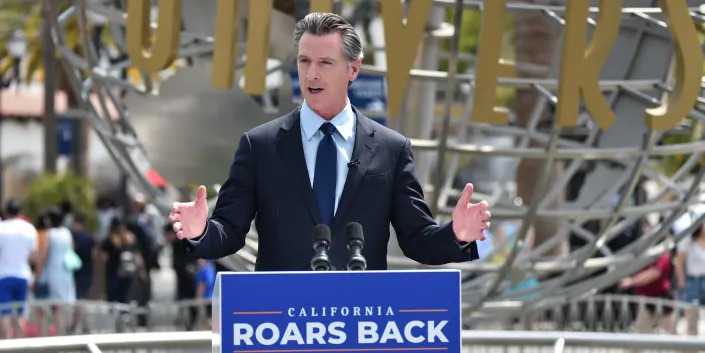California is set to dismantle the largest death row in the US and transform it into a 'positive, healing environment'
CA Gov. Gavin Newsom said Monday the state will dismantle the death row at San Quentin State Prison.
Inmates in the country's largest death row will be moved to the general population in other prisons.
Newsom said "wealth and race" are bigger factors to being on death row than "guilt or innocence."
Gov. Gavin Newsom of California announced the state will dismantle San Quentin State Prison's death row and turn it into a "positive, healing environment" over the next two years, the Associated Press reported Monday.
The inmates on death row in San Quentin — the country's largest death row — will be transferred to prisons that "typically house people serving life-without-parole sentences," Vicky Waters, a spokesperson for the California Department of Corrections and Rehabilitation, told Insider.
The vacant space at San Quentin will be transformed into a "positive, healing environment to provide increased rehabilitative, educational, and health care opportunities," according to a proposed budget.
"The prospect of your ending up on death row has more to do with your wealth and race than it does your guilt or innocence," Newsom said Monday. "We talk about justice, we preach justice, but as a nation, we don't practice it on death row."
While Newsom put a moratorium on state executions in 2019, the state hasn't executed any inmates since 2006.
California has the highest number of death row prisoners in the country, according to the Death Penalty Information Center, with 694 inmates.
Waters told the AP that the transformation will be "innovative and anchored in rehabilitation."
"For the first time in California's history, eligible death-sentenced individuals may be housed in general population areas where they can have more access to job opportunities, enabling them to pay court-ordered restitution to their victims when applicable," Waters told Insider.
"People on death row will not be resentenced, and would be rehoused following thorough reviews by Institutional Classification Committees, which will take several factors into account, including their security level, their behavior, and any safety concerns," she added.
A representative for Newsom did not immediately respond to Insider's request for comment.









